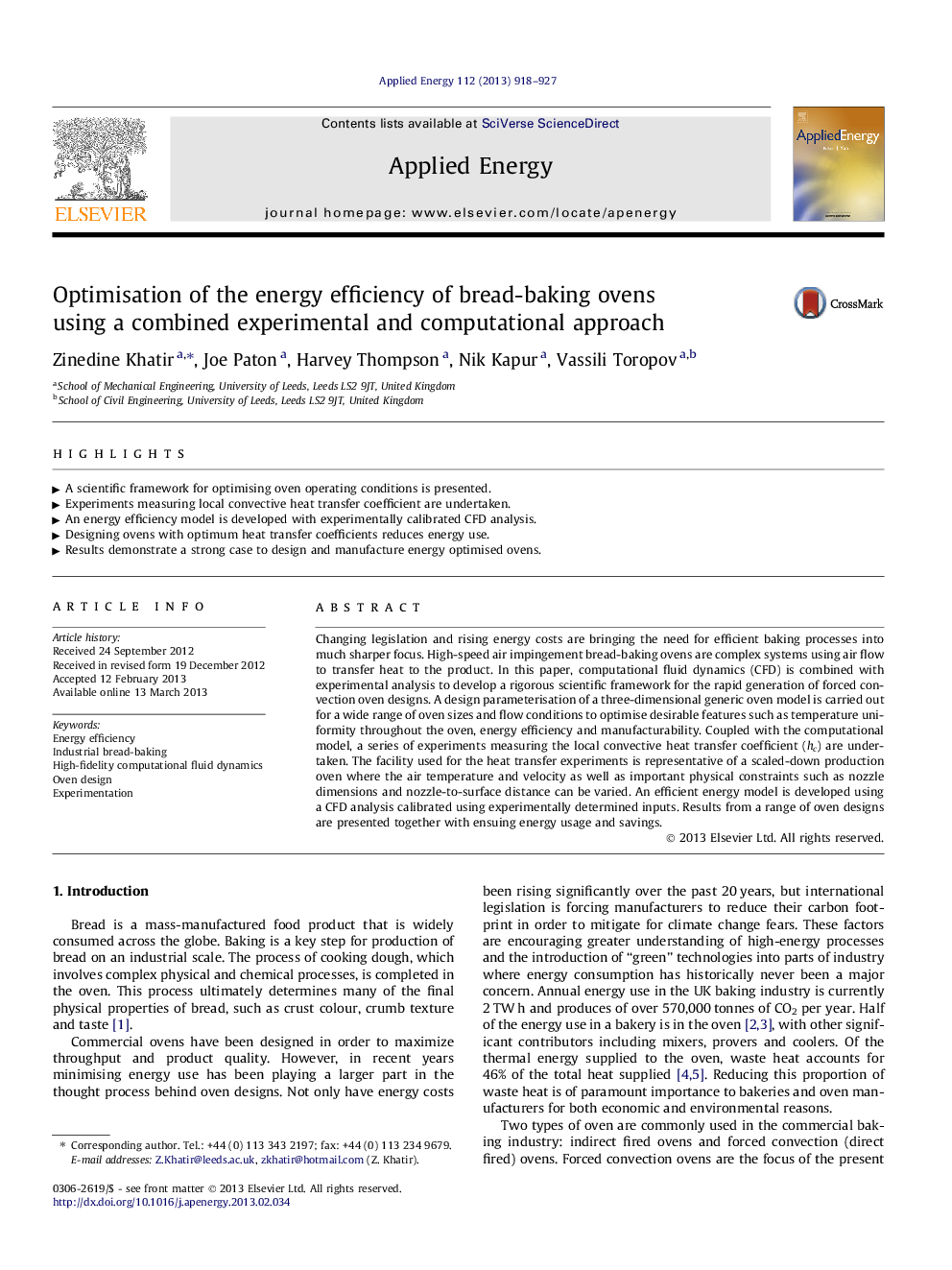| کد مقاله | کد نشریه | سال انتشار | مقاله انگلیسی | نسخه تمام متن |
|---|---|---|---|---|
| 242971 | 501913 | 2013 | 10 صفحه PDF | دانلود رایگان |

Changing legislation and rising energy costs are bringing the need for efficient baking processes into much sharper focus. High-speed air impingement bread-baking ovens are complex systems using air flow to transfer heat to the product. In this paper, computational fluid dynamics (CFD) is combined with experimental analysis to develop a rigorous scientific framework for the rapid generation of forced convection oven designs. A design parameterisation of a three-dimensional generic oven model is carried out for a wide range of oven sizes and flow conditions to optimise desirable features such as temperature uniformity throughout the oven, energy efficiency and manufacturability. Coupled with the computational model, a series of experiments measuring the local convective heat transfer coefficient (hc) are undertaken. The facility used for the heat transfer experiments is representative of a scaled-down production oven where the air temperature and velocity as well as important physical constraints such as nozzle dimensions and nozzle-to-surface distance can be varied. An efficient energy model is developed using a CFD analysis calibrated using experimentally determined inputs. Results from a range of oven designs are presented together with ensuing energy usage and savings.
► A scientific framework for optimising oven operating conditions is presented.
► Experiments measuring local convective heat transfer coefficient are undertaken.
► An energy efficiency model is developed with experimentally calibrated CFD analysis.
► Designing ovens with optimum heat transfer coefficients reduces energy use.
► Results demonstrate a strong case to design and manufacture energy optimised ovens.
Journal: Applied Energy - Volume 112, December 2013, Pages 918–927